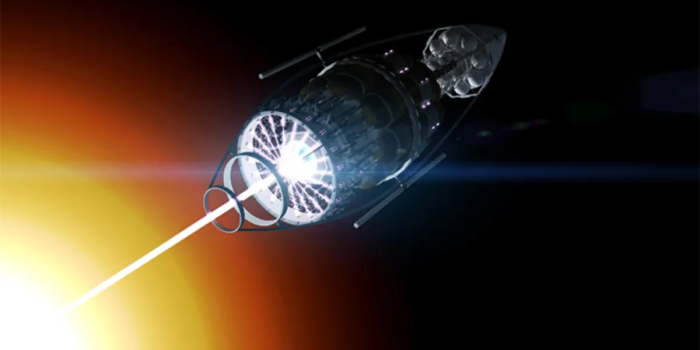In the realm of science fiction, interstellar travel has long been depicted as a fantastical concept, reserved for the imaginations of writers and filmmakers. However, recent developments in physics have brought this once-fictional idea closer to reality. Antimatter, often portrayed in popular media as a futuristic energy source, is not merely a figment of imagination but a tangible element with immense potential.
Antimatter, composed of particles possessing opposite electric charges to regular matter, holds the promise of unparalleled energy generation through annihilation when it comes into contact with conventional matter. Weed, CEO of Positron Dynamics, elucidates this potential, highlighting how a minute quantity of antimatter could yield energy equivalent to a nuclear explosion. The allure of such colossal energy lies in its capacity to propel spacecraft at unprecedented velocities, enabling expedited voyages across vast cosmic distances.
Weed’s projections envision antimatter-powered spacecraft drastically reducing travel times within our solar system and beyond. The theoretical possibility of reaching Proxima Centauri, the nearest star system, in merely five years stands in stark contrast to the decades-long journeys undertaken by contemporary spacecraft. However, despite the tantalizing prospects offered by antimatter propulsion, the primary hurdle remains its exorbitant cost rather than technological limitations.

Gerald Jackson, a proponent of antimatter propulsion, emphasizes the feasibility of developing prototypes given adequate funding. While physicists have demonstrated the ability to produce antimatter particles, the prohibitively high costs associated with their production hinder widespread implementation. Jackson’s vision extends to conceptualizing antimatter-based space sails, offering a potential solution for decelerating spacecraft upon reaching distant celestial bodies.
Weed’s innovative approach focuses on harnessing positrons, the lighter counterparts to antiprotons, for propulsion systems. Unlike their more massive counterparts, positrons occur naturally, presenting a cost-effective alternative for antimatter production. Weed’s concept revolves around utilizing krypton-79 to extract high-energy positrons, subsequently leveraging their annihilation with regular matter to initiate fusion reactions for spacecraft propulsion. However, the practical implementation of such a system remains financially daunting due to the challenges associated with moderating highly energetic positrons.

Despite numerous proposals and conceptual designs for antimatter propulsion spanning decades, significant challenges persist in translating these ideas into tangible realities. Engineers and astrophysicists emphasize the formidable engineering intricacies involved in harnessing and controlling the immense energy generated by antimatter. Safety concerns during testing underscore the necessity for secure testing facilities, with suggestions ranging from lunar bases to mitigate potential risks to terrestrial environments.
While antimatter propulsion holds immense promise for revolutionizing space travel, its practical realization hinges on overcoming formidable technological, financial, and safety challenges. The collective optimism of scientists and engineers underscores the imperative of exploring unconventional yet plausible ideas to propel humanity further into the cosmos, albeit acknowledging the gradual pace of progress absent compelling incentives driving interstellar exploration.


